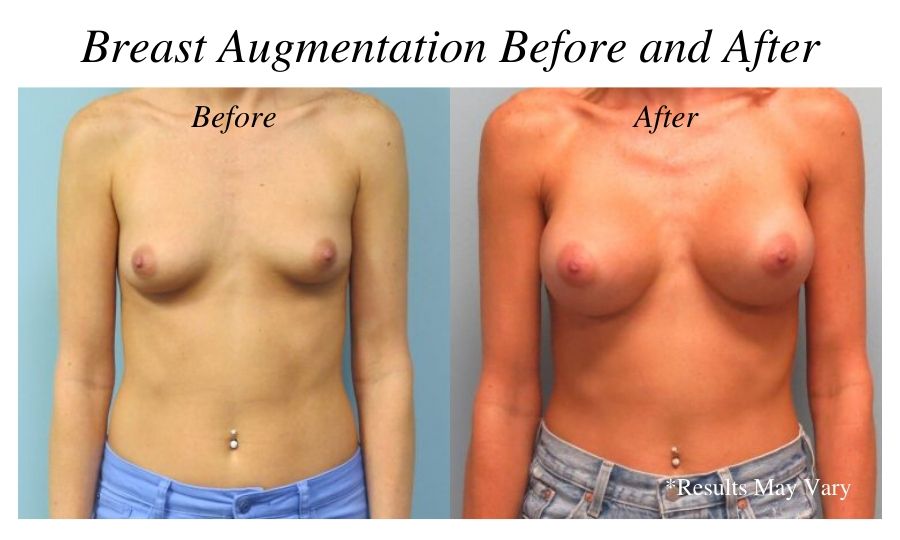The Most Frequently Asked Questions About Plastic Surgery
Posted November 13, 2019 in Frequently Asked Questions

9 Min Read
Plastic surgery is growing in popularity.
With so many women and men considering a cosmetic procedure, it is expected that there would be some questions about the plastic surgery process.
1. Am I paying the right amount for my plastic surgery procedure?
Trying to research the cost of your surgical procedure is an endless and losing battle.
No matter how much research you do, you will only find averages and estimates—which are usually thousands of dollars apart.
While it can be annoying not to get the answer you are looking for, there is a reason as to why finding a price estimate is so tricky:
Plastic surgery is personalized to the patient.
The cost of any surgical procedure involves the techniques used, the extent of correction needed, geographical location, and the skills, knowledge, and experience of the surgeon.
Additional cost factors include anesthesia fees and facility fees.
2. Can medspa treatments replace the need for surgery?
While many medspa treatments restore a smoother and more even-toned complexion, they cannot match the results offered with a surgical procedure.
Medspa treatments are ideal for patients with a lesser degree of visible aging or patients who are looking to prolong the quality of their surgical results.
3. What can a medspa treatment accomplish that facelift surgery cannot?
While medspa treatments cannot target the same extent of tissue laxity as facelift surgery, they are not without benefit.
Facelift surgery targets the signs of aging like wrinkles, deep creases, sagging tissues, and volume loss.
Facelift surgery cannot target the texture and tone of the skin. Laser resurfacing, microneedling, and microdermabrasion improve skin tone and texture.
4. How can I get natural-looking breasts?
Breast augmentation with implants is a good way to achieve natural-looking breast fullness.
Implants are available in different sizes, shapes, and filling materials so that you can achieve your desired results.
While natural breasts can be achieved with both saline and silicone implants, silicone implants will provide a more natural look and feel.
Fat transfer to the breasts can also be performed. While the results obtained from this are natural, they are not as predictable as implant-based breast augmentation and may require more than one surgical procedure to achieve the desired results.
5. What happens if I experience a complication with my breast implant?
While it is rare, some women experience physical complications with their breast implants like capsular contracture (the contracting of the scar tissue around the implant), implant rupture, double bubble deformity, or bottoming out.
Unfortunately, the only way to correct many of these complications is with breast revision surgery.
Breast revision removes the damaged implant and replaces it with a new one—if desired.
Dr. Bindingnavele, as part of his ongoing commitment to his patients, sees all of his patients yearly, or more often, as desired to assess the implants. He does this so that an MRI can assess an implant leak. Also, if a capsular contracture is caught and treated early with oral medications or appropriate massage, surgery can be avoided.
6. What is the difference between a breast lift and breast reduction?
Breast lift surgery targets sagging tissues and raises the breasts.
Breast reduction removes excess breast tissue that is contributing to massive or overly large breasts.
While a breast lift is often performed with a breast reduction, breast reduction does not have to be performed with a breast lift. To qualify as a breast reduction candidate, a certain amount of breast tissue has to be removed; your surgeon will determine if this will be the case in your situation.
Some women even choose to combine their breast lift with breast augmentation to restore breast volume that was lost with pregnancy or age.
7. Can I have kids after a Mommy Makeover?
The Mommy Makeover is the name given to a combination of surgical procedures that target the physical changes brought on by pregnancy.
Some women start to consider this surgery after having their first child even if they are thinking about more children in their future.
While this procedure can be performed before having additional children, it is not recommended.
Future pregnancies will negatively impact and may even reverse the results of your Mommy Makeover.
Surgeons suggest waiting for your Mommy Makeover until you are sure that you are finished having children.
8. Is a tummy tuck different than liposuction?
Yes. Liposuction removes excess pockets of fat in the abdomen—as well as other regions of the body.
Tummy tuck surgery tightens and repairs abdominal muscles, trims excess skin on the lower abdomen, and contours the stomach.
Liposuction is often performed in combination with a tummy tuck, but liposuction does not require a tummy tuck.
9. Will my liposuction results be permanent?
Your liposuction results will be long lasting, but it is up to you to make those permanent.
Even though liposuction removes excess fat, additional fat can still develop if a healthy lifestyle is not followed.
10. What procedures can be combined with liposuction?
Liposuction can be performed alongside nearly any body contouring procedure, such as tummy tuck surgery, thigh lift surgery, and arm lift surgery, or facial procedures like neck lift surgery to further enhance the quality of results.
While the procedures above use liposuction to remove unwanted fat from the body, other cosmetic procedures use that fat as an augmenting material.
Fat transfer to the face and the Brazilian Butt Lift take the fat that is removed with liposuction, purify it, and reinject it back into the body.
Fat grafting procedures allow patients to achieve natural-looking and feeling fullness.
11. Why Should I Get Liposuction Instead of CoolSculpting® or Emsculpt®?
Both CoolSculpting® or Emsculpt® provide only a fraction of the results that a full liposuction procedure can provide.
The cost of the surgical procedure is comparable to the non-surgical procedure, and the results are much more significant and predictable.
Rather than being limited to working only on from the surface of the skin, liposuction goes exactly where the fat is and suctions it away at a much more drastic rate than any non-surgical procedure.
12. Should I consider labiaplasty?
Even though it has become more normal to discuss, some women are still too embarrassed to consider or to learn more about labiaplasty.
Labiaplasty—a form of surgical vaginal rejuvenation— provides both aesthetic and physical improvement. This procedure can help:
- Improve the aesthetic appearance of the labia both in and out of clothing
- Increase comfort when participating in activities like riding a bike or horseback riding
- Reduce urinary incontinence
- Enhance sexual pleasure
13. Should I combine a neck lift with my facelift?
While it is not a requirement to combine a neck lift with your facelift, many patients do so in order to maintain balance.
These 2 features often age at the same rate—or close to the same rate.
Therefore, addressing the aging concerns of one without treating the other can place the features out of balance and diminish your surgical results.
14. How can I extend the results of my facelift?
You can extend your facelift results by staying out of the sun, applying broad-spectrum sunscreen whenever you are in the sun, practicing proper skincare maintenance, and undergoing medspa treatments like laser resurfacing, microneedling, Ultherapy®, and injectable treatments.
The results of your facelift will be long lasting, and the above maintenance will help to extend the quality of your results, but no surgical or non-surgical treatment can stop the aging process.
15. Does a facelift address the eyes?
No. Traditional facelift surgery does not address the upper region of the face. Facelift surgery targets the bottom two-thirds of the face, including:
- Cheeks
- Midface
- Nasolabial folds
- Jawline
- Jowls
16. What is the best way to address lines and wrinkles around the eyes?
Fine lines, wrinkles, and sagging skin develop on the eyelids and around the eyes due to age, sun damage, blinking, and environmental factors.
You have multiple ways to address these signs of aging.
Surgical options include eyelid surgery and brow lift surgery.
Non-surgical options include BOTOX® Cosmetic and Dysport®.
- Eyelid surgery addresses sagging skin on the eyelids. This can include hooded upper eyebrows, puffy bags on the lower lids, and crow’s feet.
- Brow lift surgery addresses sagging brows and deep creases on the forehead.
- Dysport® and BOTOX® Cosmetic temporarily smooths lines and wrinkles by preventing the muscles from contracting. These lines include crow’s feet, frown lines, and forehead lines.
17. How can I reduce plastic surgery scars?
Scarring is likely to develop at all incision sites.
Dr. Bindingnavele does his best to place all incisions in easy-to-conceal places, but some scarring may be visible in bathing suits.
While these scars will fade with time, you can help minimize the visibility of these scars by keeping the healing incisions out of the sun, not placing any extra stress on the healing incisions, practicing massage techniques to break up scar tissue, and applying silicone strips, gel, and topical scar creams.
As part of the services included with the surgery, Dr. Bindingnavele gives his patients silicone scar treatment products and specific scar care instructions. These instructions will be given at the appropriate time to minimize the appearance of the scars.
18. What is the difference between Dysport®/BOTOX® Cosmetic and fillers?
Dysport®/ BOTOX® Cosmetic and injectable dermal fillers are often—and incorrectly—used interchangeably.
While Dysport®/ BOTOX® Cosmetic and dermal fillers are both used to restore a more youthful facial complexion, they work in 2 very different manners and are 2 separate treatments.
Dysport®/BOTOX® Cosmetic is a neurotoxin that targets dynamic lines. Dynamic lines are the expression lines that form around the eyes, brows, forehead, and mouth.
Dysport®/BOTOX® Cosmetic works by temporarily relaxing the muscles in the treated area so that the muscles cannot contract to form wrinkles. These areas heal, and the lines resolve slowly.
Injectable dermal fillers like JUVÉDERM®, Restylane®, and Sculptra® Aesthetic eliminate facial lines and restore facial fullness by physically adding volume and stimulating collagen production.
Dermal fillers work on static lines. These wrinkles are caused by age, sun damage, and environmental factors, and are present even when the face is at rest.
19. Will I look fake after plastic surgery?
There is a misconception that plastic surgery will result in an unnatural—or fake—appearance.
While the internet is full of stories and images detailing “plastic surgery fails,” there is no reason to fret.
Unnatural results are the result of incorrectly performed techniques.
Avoid a Plastic Surgery “Fail”
You can reduce your risk of having a botched surgery by choosing a skilled, knowledgeable, and board-certified surgeon like Dr. Vijay Bindingnavele, who has been providing natural-looking results for women and men in Corpus Christi, Texas, for over a decade.
Contact our office by calling us at (361) 888-7417 or by filling out our online contact form.
